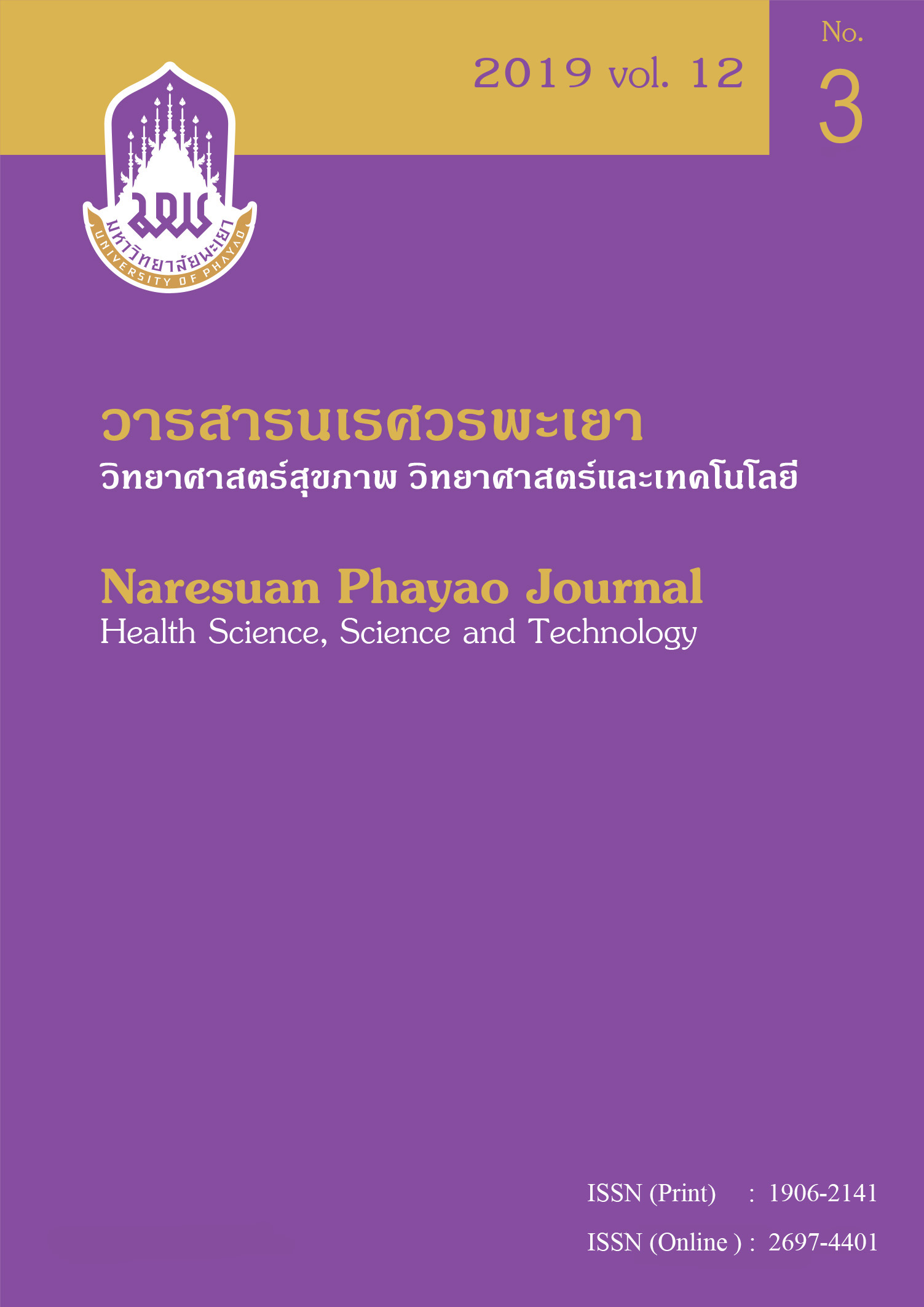The extract of Boesenbergia rotunda attenuates neuronal loss and the activation of astrocytes within the hippocampus of rats following ischemic stroke.
Keywords:
Boesenbergia rotunda, middle cerebral artery occlusion, ischemic stroke, astrocytes, hippocampusAbstract
Ischemic stroke significantly provoked the induction of brain damage, in which all components are affected including neurons, glial cells and the vasculature. Nowadays, the preventive strategy of ischemic stroke, one of the most challenge problems in adult, especially in the elderly, has received highly attention due to the limitation of therapeutic efficacy. In this study, we aimed to investigate the protective effect of Boesenbergia rotunda extract on neuronal cell and the alterations of astrocytes in animal model of ischemic stroke. Adult male Wistar rats were orally given B. rotunda extract at dose of 200 mg/kg body weight at a period of 14 days before and 7 days after middle cerebral artery occlusion (MCAO). We found that stroke rats subjected to B. rotunda extract showed a significant increase of neuronal density in CA1 of hippocampus. In addition, decreased expression of glial fibrillary acidic protein (GFAP) was significantly observed in CA1 in stroke plus B. rotunda group. The results indicated that B. rotunda extract at dose of 200 mg/kg could suppress the neuronal loss associated with lower activation of astrocytes. Therefore, B. rotunda is the potential medicinal plant might prevent brain damage. However, further researches are essential to elucidate the possible active ingredient.
References
2. Feigin VL, Norrving B, Mensah GA. Global Burden of Stroke. Circ Res. 2017;120(3):439-448.
3. Stapf C, Mohr JP. Ischemic stroke therapy. Annu Rev Med. 2002;53:453-475.
4. Broughton BR, Reutens DC, Sobey CG. Apoptotic mechanisms after cerebral ischemia. Stroke. 2009;40(5):e331-339.
5. Baudry M, Baudry M, Bi X., Gall C, Lynch G. The biochemistry of memory: The 26year journey of a
'new and specific hypothesis'. Neurobiol Learn Mem. 2011;95(2):125-133.
6. Kirino T. Delayed neuronal death in the gerbil hippocampus following ischemia. Brain Res. 1982; 239(1):57-69.
7. Dirnagl U, Iadecola C, Moskowitz MA. Pathobiology of ischaemic stroke: an integrated view. Trends Neurosci. 1999; 22(9):391-397.
8. Heiss WD. The ischemic penumbra: correlates in imaging and implications for treatment of ischemic stroke. The Johann Jacob Wepfer award 2011. Cerebrovasc Dis. 2011;32(4):307-320.
9. Stoll G, Jander S, Schroeter M. Inflammation and glial responses in ischemic brain lesions. Prog Neurobiol.1998; 56(2):149-171.
10. Susarla BT, Villapol S, Yi JH, Geller HM, Symes AJ. Temporal patterns of cortical proliferation of glial cell populations after traumatic brain injury in mice. ASN Neuro. 2014;6(3):159-170.
11. Liu J, Wang Y, Akamatsu Y, Lee CC, Stetler RA, Lawton MT, et al. Vascular remodeling after ischemic stroke: mechanisms and therapeutic potentials. Prog Neurobiol. 2014;115:138-156.
12. Choi DW, Rothman SM. The role of glutamate neurotoxicity in hypoxic-ischemic neuronal death. Annu Rev Neurosci. 1990;13:171-182.
13. Lipton P. Ischemic cell death in brain neurons. Physiol Rev, 1999;79(4):1431-1568.
14. Eng-Chong T, Yean-Kee L, Chin-Fei C, Choon-Han H, Sher-Ming W, Li-Ping CT, et al. Boesenbergia rotunda: From Ethnomedicine to Drug Discovery. Evid Based Complement Alternat Med. 2012;473637.
15. Shindo K, Kato M, Kinoshita A, Kobayashi A, Koike Y. Analysis of antioxidant activities contained in the Boesenbergia pandurata Schult. Rhizome. Biosci Biotechnol Biochem. 2006;70(9):2281-2284.
16. Sohn JH, Han KL, Lee SH, Hwang JK. Protective effects of panduratin A against oxidative damage of tert-butylhydroperoxide in human HepG2 cells. Biol Pharm Bull. 2005;28(6):1083-1086.
17. Tewtrakul S, Subhadhirasakul S, Karalai C, Ponglimanont C, Cheenpracha S. Anti-inflammatory effects of compounds from Kaempferia parviflora and Boesenbergia pandurata. Food Chemistry, 2009;115(2):534–538.
18. Longa EZ, Weinstein PR, Carlson S, Cummins R. Reversible middle cerebral artery occlusion without craniectomy in rats. Stroke, 1989;20(1):84-91.
19. Kirino T, Sano K. Selective vulnerability in the gerbil hippocampus following transient ischemia. Acta Neuropathol, 1984;62(3):201-208.
20. White BC, Sullivan J, M.DeGracia DJ, O'Neil BJ, Neumar RW, Grossman LI, et al. Brain ischemia and reperfusion: molecular mechanisms of neuronal injury. J Neurol Sci, 2000;179(S1-2):1-33.
21. Takano T, Oberheim N, Cotrina ML. Nedergaard M. Astrocytes and ischemic injury. Stroke, 2009;40(3 Suppl):S8-12.
22. Sims NR, Yew WP. Reactive astrogliosis in stroke: Contributions of astrocytes to recovery of neurological function. Neurochem Int, 2017;107:88-103.
23. Yoon JS, Jo D, Lee HS, Yoo SW, Lee TY, Hwang WS, et al. Spatiotemporal Protein Atlas of Cell
Death-Related Molecules in the Rat MCAO Stroke Model. Exp Neurobiol, 2018;27(4):287-298.
24. Suzumura A, Takeuchi H, Zhang G, Kuno R, Mizuno T. Roles of glia-derived cytokines on neuronal degeneration and regeneration. Ann N Y Acad Sci. 2006;1088:219-229.
25. Greenberg, DA, Jin K. Vascular endothelial growth factors (VEGFs) and stroke. Cell Mol Life Sci. 2013;70(10):1753-1761.
26. Shen F, Fan Y, Su H, Zhu Y, Chen Y, Liu W, et al. Adeno-associated viral vector-mediated hypoxia-regulated VEGF gene transfer promotes angiogenesis following focal cerebral ischemia in mice. Gene Ther. 2008;15(1):30-39.
Downloads
Published
How to Cite
Issue
Section
License
ผู้นิพนธ์ต้องรับผิดชอบข้อความในบทนิพนธ์ของตน มหาวิทยาลัยพะเยาไม่จำเป็นต้องเห็นด้วยกับบทความที่ตีพิมพ์เสมอไป ผู้สนใจสามารถคัดลอก และนำไปใช้ได้ แต่จะต้องขออนุมัติเจ้าของ และได้รับการอนุมัติเป็นลายลักษณ์อักษรก่อน พร้อมกับมีการอ้างอิงและกล่าวคำขอบคุณให้ถูกต้องด้วย
The authors are themselves responsible for their contents. Signed articles may not always reflect the opinion of University of Phayao. The articles can be reproduced and reprinted, provided that permission is given by the authors and acknowledgement must be given.








